
Olympia is the capital of the U.S. state of Washington and the county seat and largest city of Thurston County. It is 60 miles (100 km) southwest of the state's most populous city, Seattle, and is a cultural center of the southern Puget Sound region.
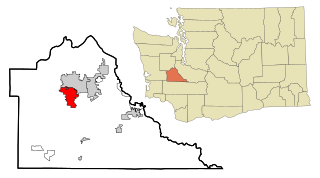
Tumwater is a city in Thurston County, Washington, United States. The population was 25,350 at the 2020 census. The city is situated near where the Deschutes River enters Budd Inlet, the southernmost point of Puget Sound; it also borders the state capital of Olympia to the north. Tumwater is the oldest permanent Anglo-American settlement on Puget Sound.
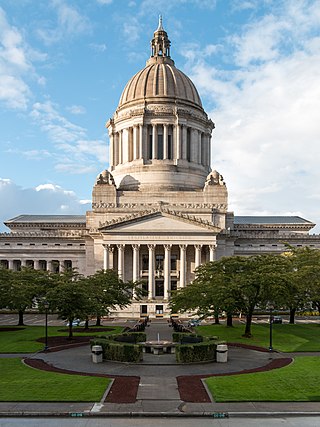
The Washington State Capitol or Legislative Building in Olympia is the home of the government of the state of Washington. It contains chambers for the Washington State Legislature and offices for the governor, lieutenant governor, secretary of state and treasurer and is part of a campus consisting of several buildings. Buildings for the Washington Supreme Court, executive agencies and the Washington Governor's Mansion are part of the capitol campus.
George Washington Bush was an American pioneer and one of the first African-American non-Amerindian settlers of the Pacific Northwest.
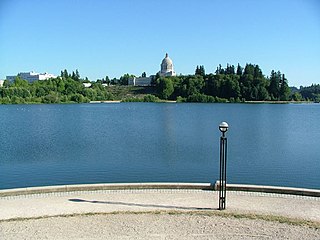
Capitol Lake is a 3 kilometer long, 260-acre (1.1 km2) artificial lake at the mouth of Deschutes River in Tumwater/Olympia, Washington. The Olympia Brewery sits on Capitol Lake in Tumwater, just downstream from where the Tumwater Falls meet the artificial lake. The Washington State Department of Enterprise Services (DES) manages the lake, as part of The Washington State Capitol Campus.

The history of Olympia, Washington, includes long-term habitation by Native Americans, charting by a famous English explorer, settlement of the town in the 1840s, the controversial siting of a state college in the 1960s and the ongoing development of arts and culture from a variety of influences.

State Route 510 (SR 510) is a state highway in Thurston County, Washington. The 13 miles (20.9 km) long highway extends southeast from an interchange with Interstate 5 (I-5) in Lacey to SR 507 in Yelm. SR 510 roughly parallels the Nisqually River, the border between Thurston and Pierce counties, between the Fort Lewis and Nisqually Indian Community area to Yelm.
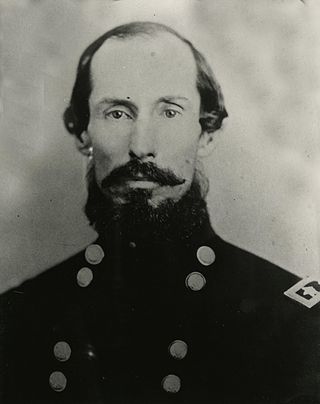
Marshall Frank Moore was an American Civil War veteran, attorney, and the seventh Governor of Washington Territory.

State Route 121 (SR 121) is a state highway located entirely in Thurston County, Washington, United States. The highway serves Millersylvania State Park, forming a 7.67-mile (12.34 km) loop between two interchanges with Interstate 5 (I-5) near Maytown. It is an auxiliary route of U.S. Route 12 (US 12).

U.S. Route 101 (US 101) is a United States Numbered Highway that runs along the West Coast from Los Angeles, California to Tumwater, Washington. Within the state of Washington, US 101 connects cities on the coast of the Pacific Ocean and encircles the Olympic Peninsula around the Olympic Mountains. It also serves as the main access for Olympic National Park, several state parks, and other scenic and recreational areas.

The Puget Sound region is a coastal area of the Pacific Northwest in the U.S. state of Washington, including Puget Sound, the Puget Sound lowlands, and the surrounding region roughly west of the Cascade Range and east of the Olympic Mountains. It is characterized by a complex array of saltwater bays, islands, and peninsulas carved out by prehistoric glaciers.

Scott Lake is a lake in Thurston County, Washington, United States. It is located 3.2 miles (5.1 km) south of the Tumwater city limits, 8.4 miles (13.5 km) south of the Olympia city limits, and 14.1 miles (22.7 km) north of the Centralia city limits. The location for Scott Lake is in Sections 33 and 34, Township 17N, Range 2W, Willamette Meridian.

Charles H. Mason was an American politician, the first Secretary of State for Washington Territory, and acting Governor for two and a half years while the territorial Governor, Isaac Ingalls Stevens, conducted railroad surveys and concluded treaties with First Nations tribes and confederations.
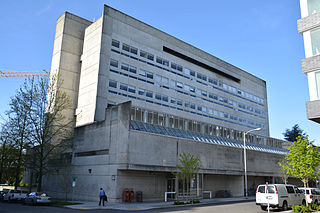
John T. Condon Hall is an academic building of the University of Washington in Seattle, Washington. The building formerly housed the UW School of Law. The hall was named after John T. Condon, the first dean of the School of Law.
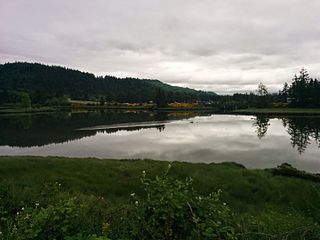
Mud Bay is the southernmost reach of Puget Sound, at Eld Inlet just outside the city limits of Olympia, Washington. The name Eld Inlet was officially bestowed after a member of the U.S. Navy's Wilkes Expedition, but "Mud Bay" is a local, informal adoption.

The Joel M. Pritchard Building at the Washington State Capitol campus in Olympia was built in 1957–1958 to house the Washington State Library, which had outgrown its previous location in the basement of the Washington Supreme Court's Temple of Justice. The building's architect, Paul Thiry who also designed the Century 21 Exposition complex in Seattle, used Modern design incorporating the Wilkeson sandstone quarried a few tens of miles away and used in the state capitol and other buildings. It was the last monumental building added to the capitol campus and one of the few departures from the Olmsted Brothers' 1928 campus plan. It was described as "among the most important regional archetypes of mid-century architectural design and thought...a textbook on how Washingtonians looked at the future in the 1950s". It was named for Joel M. Pritchard, a U.S. Congressman from Washington and the state's Lieutenant Governor. Thiry won the American Institute of Architects/American Library Association Library Building Award for the design, the first such award to be presented. The building was listed on the National Register of Historic Places in 2015.

South Puget Sound is the southern reaches of Puget Sound in Southwest Washington, in the United States' Pacific Northwest. It is one of five major basins encompassing the entire Sound, and the shallowest basin, with a mean depth of 37 meters (121 ft). Exact definitions of the region vary: the state's Department of Fish and Wildlife counts all of Puget Sound south of the Tacoma Narrows for fishing regulatory purposes. The same agency counts Mason, Jefferson, Kitsap, Pierce and Thurston Counties for wildlife management. The state's Department of Ecology defines a similar area south of Colvos Passage.

The first schoolhouse in Olympia, Washington was built in 1852. According to an 1853 newspaper, it was one of three schools north of Cowlitz Landing, Washington, and the only public school of the three. Its foundation preceded public schools in other early Puget Sound region settlements; Steilacoom, the state's first town to incorporate, was taught out of a living room when the state's first school district was created there in 1854, and the landing of the Denny Party in Alki (Seattle) was less than one year prior.
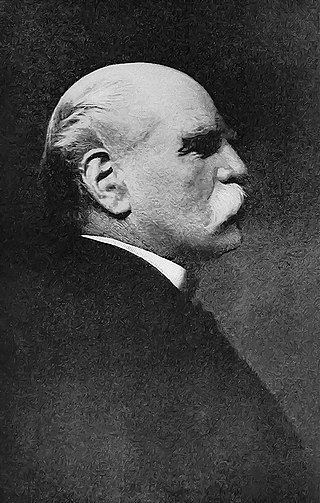
William Henry Mitchell was a pioneer of the Washington Territory and Olympia who made big contributions to the city's industrial and business development. He was a member of the Washington State Legislature and the Pioneer's Association of the State of Washington, an Olympian Town Trustee and a joint councilman for Thurston and Lewis counties.


















